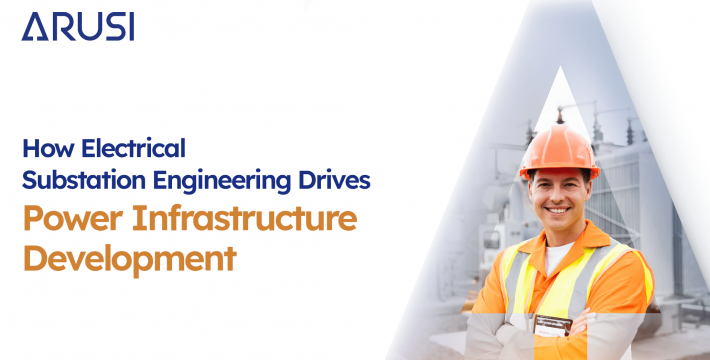
Electricity is what keeps the world moving nowadays. Whether it’s the lights in our houses or the machines that run our factories, we need a steady flow of electricity to function as a society. However, this system doesn’t just appear out of thin air. Someone must design and build it – that someone being an electrical substation engineer.
Electrical substations are like the unsung heroes of power grids; they act as crucial intersections where high-voltage electricity received from power plants is transformed into lower voltages suitable for distribution before being directed toward homes, offices and industries etcetera. Substation engineering covers everything from planning and designing such facilities through their construction, commissioning right up until they are eventually maintained over time.
The Backbone of Power Transmission
Electrical substations are key points in the power grid that connect different parts of the transmission and distribution network. They are places where electricity is changed from one voltage level to another so it can be sent long distances more easily or distributed within communities efficiently.
Power plants send electricity to substations through high-voltage transmission lines, which lower the voltage with transformers for distribution. The electricity then enters the local distribution system, where it moves through cables and transformers until it reaches homes, businesses and industrial facilities along the way.
Designing electrical substations is a complex engineering challenge involving several fields — including electrical, civil and structural engineering. In addition to dealing with high voltages and currents, these facilities must withstand environmental pressures like severe weather and earthquakes.
Engineering Marvels: The Complexity of Substation Design
Substation engineers carefully lay out such sites based on considerations such as equipment location, clearances and accessibility. They also ensure that safety rules are followed at each substation site so accidents will be avoided while reliability is maximized.
Another important part of substation engineering involves selecting appropriate pieces of specialized equipment — including transformers, circuit breakers, capacitor banks and switchgear — then integrating them together correctly. These components help regulate voltage levels, control power flows, protect against faults; plus keep the energy flowing smoothly throughout power grids.
Driving Infrastructure Development
Substations are vital elements within any nation’s power infrastructure because they provide necessary links for transmitting electricity between regions or distributing it within cities. As populations grow and energy consumption rises worldwide, robustness becomes increasingly critical factors associated with utility companies’ abilities meet ever-growing demands placed upon their systems by customers living in communities served by those utilities.
Utility engineering consulting firms play an important role in supporting this type of development by offering expert services related to substation design among other things needed during construction phases required when creating new such structures These organizations work hand-in-hand with governments around various countries as well private sector entities involved in everything connected renewable sources implementation projects designed enhance national energy security since they are aware of what has be done order achieve success in such endeavors.
Modernization and Upgrades: Keeping Pace with Technology
The field of electrical substation engineering is not static; it continuously evolves to keep pace with technological advancements and changing energy landscapes. As we transition towards more sustainable and renewable energy sources, substations must adapt to accommodate the integration of these new technologies into the existing grid.
Substation engineers work on developing innovative solutions to integrate renewable energy sources, such as solar and wind power, into the grid. They design and implement systems for energy storage, load balancing, and smart grid technologies, ensuring that the power infrastructure remains resilient and efficient.
Moreover, as aging infrastructure reaches the end of its lifespan, substation engineers play a crucial role in upgrading and retrofitting existing facilities. They implement state-of-the-art equipment, automation systems, and cybersecurity measures to enhance the reliability, efficiency, and security of the power grid.
The Future of Power: Enabling Sustainable Growth
With the world still dealing with global warming and the necessity for sustainable progress, electrical substation engineering has become more significant. Substations are crucial in allowing the shift to a greener and more resilient power infrastructure.
Through enabling renewable energy sources, energy storage systems, and smart grid technologies integration, these professionals are creating paths for cleaner, efficient and reliable future power supply. Their knowledge together with creative ideas will promote establishment of power facilities that foster sustainable development while minimizing negative effects on environment.
Final Thoughts
Among the power industry’s unsung heroes is electrical substation engineering which drives national level critical electricity infrastructure projects’ growth and transformation. Substation engineers contribute greatly towards shaping tomorrow’s energy landscape by ensuring reliable transmission as well distribution of electricity as enabling renewable sources’ integration.
Substation engineering will grow even more important as we grapple with rising demand for energy coupled with environmental concerns. These committed experts can continue to promote resilienceness in power systems through embracing technological advancements and working hand in hand with various stakeholders within the sector thus ensuring robustness in our infrastructure so that all communities have access to reliable energy necessary for their prosperity.


